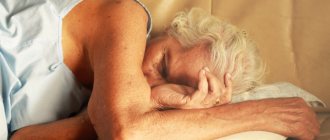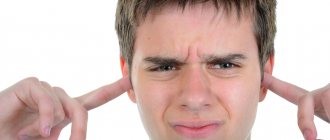The word "somatics" became known thanks to Thomas Hann. This is what he called new approaches to the study of movements. After publication they became very popular. Thomas Hanna founded the Institute for Somatic Research. His teachings help people overcome diseases of the joints, bones and spine. The method is already very popular in Europe. “Heal yourself and live in ease and pleasure” - this motto is ideal for understanding what to expect from somatics. It is also promoted as a way to combat aging.
History[ | ]
| This section is missing references to information sources. Information must be verifiable, otherwise it may be questioned and deleted. You may edit this article to include links to authoritative sources. This mark was set on May 12, 2011 . |
Even in Greek philosophy and medicine, the idea of the influence of the soul and spirit on the body was widespread.
One of the first to use the term “psychosomatic” was the doctor Johann Christian Heinroth in 1818. And in 1822, Jacobi added the concept of “somatopsychic” to this area.
In our time, this approach became widespread in the 20-50s of the 20th century. F. Alexander, S. Jeliffe, F. Dunbar, E. Weiss, O. English and others worked in the field of psychosomatic medicine.
In 1939, the publication of the journal Psychosomatic Medicine began in the United States. In 1950, the American Psychosomatic Society was created.
Sigmund Freud explored psychosomatic illnesses, which shaped his theories about the unconscious mind and repression. Many known diseases were previously classified as “hysterical” or “psychosomatic”, such as bronchial asthma, allergies, imaginary pregnancy and migraines. There is controversy over some diseases, including chemical sensitivity, Gulf War syndrome, and chronic fatigue syndrome. Some people believe that stigmata is a psychosomatic illness based on identification with the biblical suffering of Christ.
Psychosomatics: table of diseases and how to treat
On the Internet you can find a lot of interpretations on the topic “psychosomatics - table of diseases.” According to them, for example, bronchial asthma, migraines, allergies, type 2 diabetes mellitus, coronary heart disease, obesity, radiculitis, intestinal colic, pancreatitis, psoriasis, psychological infertility, vegetative-vascular dystonia, vitiligo and many other diseases are truly psychosomatic.
Yes, after reading this article, you may already understand which direction you should move in order to work through the psychosomatic causes of a specific disease. However, it never hurts to play it safe and use the services of a doctor, psychologist or psychotherapist.
Abscess (ulcer). Disturbing thoughts of resentment, neglect and revenge.
Adenoids. “Trifle” fears, fears from vanity, from the habit of worrying about everything.
Alcoholism. Feelings of uselessness, worthlessness, hopelessness, emptiness, guilt, inadequacy to the world. Self-denial, low self-esteem. “Who needs this?” Feelings of futility, guilt, inadequacy.
One of the most intractable diseases that a person can rarely cope with alone. After all, here the deep state of belonging to the world—happiness—is most often disrupted. And the formula for happiness is creativity, communication, love. If a person with alcoholism is given the opportunity to do something creatively, if he is given the feeling of being needed by others, if he loves and is loved, then healing is possible.
Allergy. Denial of one's own power. The person is intolerant of other people. Experiences a protest that cannot be expressed. Healing is possible if pockets of suppressed emotions are identified and neutralized.
https://www.youtube.com/watch?v=ytaboutru
Amenorrhea. Reluctance to be a woman. Self-hatred.
Angina. Inability to express yourself. A strong belief that you cannot raise your voice in defense of your views and ask for your needs to be met. Inability to express oneself. Suppressing anger because you cannot cope with a situation.
Anemia. Lack of joy. Fear of life. Believing in your own inferiority deprives you of the joy of life.
Apathy. Resistance to feelings. Suppression of emotions. Fear.
Appendicitis. Fear. Fear of life. Blocking the flow of goodness that life pours out upon us.
Appetite (loss). Fear. Self-defense. Distrust of life.
Excessive appetite. Fear. Need for protection. Condemnation of emotions.
Arthritis. The feeling of not being loved. Criticism, resentment. Not being able to say no and blaming others for exploiting you. For such people, it is important to learn to say “no” if necessary. A person is always ready to attack, but suppresses this desire within himself. There is a significant emotional influence on the muscular expression of feelings, which is extremely controlled.
Desire for punishment, self-blame. The state of a victim. A person is too strict with himself, does not allow himself to relax, does not know how to express his desires and needs. The “inner critic” is too well developed. Arthritis also occurs as a result of constant criticism of oneself and others. People with this disorder believe that they can and should criticize others.
They carry a kind of curse on themselves; they strive to be right, the best, the most perfect in everything. But such a burden, full of pride and conceit, is unbearable, so the body cannot stand it and gets sick. The solution here is to learn to forgive and let go of the situation. There is no need to try to win at any cost. Learn to be kind, add philosophical perception to your life.
Arthrosis. This is a disease of workaholics. Also, the cause of this illness can be called a person’s stubbornness, his inertia and rigidity. And the reason for this approach to life is a lack of understanding of one’s meaning in life. Such a person does not see any other meaning of his existence except to constantly do some kind of work, to look for some kind of activity for himself.
To overcome the disease of arthrosis from psychosomatics, the correct approach to the work itself and a clear understanding of why you need it are important. You can knit from morning to evening, but you won’t get arthrosis of the wrist joint. But this will be the case if a person understands the meaning of his action, if the basis of his knitting is the desire to bring joy and happiness into this world for his environment.
Asthma. Inability to breathe for one's own good. Feeling depressed. Holding back sobs. Fear of life. Not wanting to be here. Asthma occurs when there are suppressed feelings of love in the family, suppressed crying, the child experiences fear of life and does not want to live anymore. Asthmatics express more negative emotions, are more likely to be angry, offended, harbor anger and a thirst for revenge.
Also, lung problems can be caused by the inability (or unwillingness) to live independently, as well as a lack of living space. Fear of frankness, sincerity, of the need to accept the new things that every day brings.
The trigger for the development of bronchial asthma can be a negative work stoppage, in which the employee’s “oxygen is cut off,” or the arrival of relatives, because of which it is “not possible to breathe” in the apartment. Gaining trust in people is an important psychological component that promotes recovery.
Atherosclerosis. Resistance. Tension. Refusal to see the good. Frequent upset due to sharp criticism. The conviction that life is hard and unbearable, the inability to rejoice. To heal, you need to learn to rejoice, you can use positive affirmations, and tune in to the good.
https://www.youtube.com/watch?v=ytcreatorsru
Hips. Fear of moving forward in implementing major decisions. Lack of purpose.
Infertility. The subconscious secretly resists procreation, fatherhood and motherhood. Unconscious anxiety can be of the following types, for example: “The child may be born sick, it is better not to give birth at all.” Or: “During pregnancy, my husband will grow cold towards me and leave for someone else.” Or: “With a child there are only problems and no joy, it’s better to live for yourself.”
Insomnia. Fear. Distrust in the life process. Guilt. Escape from life, unwillingness to acknowledge its shadow sides. Preoccupation with struggle, problems. The inability to separate yourself from the hustle and bustle or from your experiences and emotional states. Unexpressed, suppressed and “unreacted” feelings and emotions.
Warts. A petty expression of hatred. Belief in your ugliness.
Bronchitis. Nervous atmosphere in the family. Arguments and screams. A rare calm. One or more family members are driven into despair by their actions. Unspoken anger and claims that cannot be made.
Bulimia. Fear and hopelessness. Feverish overflow and release of feelings of self-hatred.
Bursitis. Symbolizes anger. The desire to hit someone.
Phlebeurysm. Staying in a situation you hate. Disapproval. Feeling overloaded and overwhelmed by work. Exaggerating the severity of problems. Inability to relax due to feelings of guilt when receiving pleasure. Fear and anxiety about the future. Constant anxiety in general. Suppressing anger and discontent within oneself with the help of will. A ban on fully experiencing your irritation. Judging irritability in other people.
Vegetative dystonia. Infantility, low self-esteem, tendency to doubt and self-blame.
Inflammatory processes. Fear. Fury. Inflamed consciousness. The conditions you see in life cause anger and frustration.
Sinusitis. Suppressed self-pity. A prolonged situation of “everyone is against me” and an inability to cope with it. Children's tears. Feeling like a victim. This is an internal cry, through which the subconscious wants to bring out suppressed emotions - bitterness, disappointment about unfulfilled dreams. The accumulation of mucus increases after strong emotional shocks.
Allergic chronic runny nose indicates a lack of emotional control. A person with chronic sinusitis tends to accumulate negative emotions in himself. His memory is organized in such a way that he does not forget anything from negative experiences. Unsolved problems greatly overload the psyche. The nose is associated with the volitional functions of a person. When they are overloaded, energy accumulations form in the nose, they form a disease.
Gastritis. Prolonged uncertainty. Feeling of doom. Suppressed frustration and irritation that everything is not happening as it should, and instead of love and recognition, we receive neglect and hostility from the world. A strong outburst of anger in the near past.
Haemorrhoids. Fear of not meeting the allotted time. A person who constantly forces himself to do a job that he does not like, pushes himself to the limit of his capabilities, or holds back accumulated negative emotions regarding past events is constantly in a state of tension. At the same time, he does not give an outlet to this tension, experiencing all the complex processes inside, alone with himself.
Anger is in the past. Burdened feelings. Inability to get rid of accumulated problems, grievances and emotions. The joy of life is drowned in anger and sadness. Fear of separation. Fear of material disadvantage. Emotional stress is most often created by the desire to urgently get what is missing. And it grows out of a feeling of material disadvantage or inability to make decisions.
Suppressed fear. “Must” do a job you don’t like. Something urgently needs to be completed in order to receive certain material benefits. Greed, hoarding, collecting unnecessary things, inability to part with unnecessary things.
Hepatitis. Resistance to change. Fear, anger, hatred.
Herpes. Unspoken bitterness. I want to (one part of the personality), but I can’t (according to the other).
Hyperthyroidism (hyperfunction of the thyroid gland). The conflict between the expressed need to prove oneself, to act more and the suppression of one’s excessive aggressiveness. Hyperthyroidism develops following strong experiences and acute life difficulties. Patients with hyperthyroidism are constantly in a tense situation; they are often older children and perform parental functions in relation to younger siblings, which leads to overcompensation of aggressive impulses.
Psychosomatic diseases[ | ]
Main article: Psychosomatic diseases
Psychosomatic diseases are diseases the causes of which are more the mental processes of the patient than any direct physiological causes. If medical examination cannot detect a physical or organic cause of the disease, or if the disease is the result of emotional states such as anger, anxiety, depression, guilt, then the disease may be classified as psychosomatic.
What is psychosomatics?
Psychosomatics is a science that studies the influence of psychological factors on the occurrence and course of body diseases. At the same time, psychosomatics is not an independent medical field, but it incorporates many areas that allow us to consider the causes of the onset and development of the disease in a more diverse and detailed manner.
The relationship between mental phenomena and physical health has been studied for several centuries.
In fact, any competent doctor will tell you that the basis of any disease is also a psychological factor, and according to WHO, from 38 to 42% of patients seeking medical help are psychosomatic patients.
Philosophical aspects of the psychosomatic problem[ | ]
Psychosomatic problem
is a fundamental problem in the science of the relationship between mind and body, at the center of which lies the question of the biopsychosocial nature of man.
This problem is strategically important for the further development of medicine, is interdisciplinary in nature and is considered from the perspective of different sciences, such as physiology, philosophy, cultural studies, etc.
The philosophical and methodological aspects of this problem consist mainly in the fact that the formation and development of psychosomatics took place in the context of philosophy, its ideas and principles, which indicates the similarity of the system of concepts of philosophy, psychology, and psychosomatics itself. However, according to some data [2], this gave rise to a discrepancy between the conceptual apparatus in the context of psychosomatic relationships when solving medical-biological and psycho-social problems in integrative medicine.
Another of the main philosophical aspects of this problem is the “psychosomatic unity” of a person, to the understanding of which today there are three approaches [3]:
1) Man-machine (La Mettrie) – the essence of man is his physical (bodily) existence;
2) The dual essence of man (R. Descartes) - the body and soul have a different nature, but at the same time they interact with each other;
3) The human body as an instrument of the soul (N.A. Berdyaev) - the body is subordinate to the soul and is its organ.
Various somatoform disorders, exacerbation of somatic diseases (diseases of the body) in situations of psychological stress, the case of Klumbis (the patient went to the doctor with complaints of pain in the heart area, after the examination the doctor made a conclusion about the patient’s good health, and told him: “You preceded me you will not die." After some time, the doctor dies as a result of an accident and his patient, having learned about this, dies) - all this confirms the connection between the soul and the body of a person, which is what the psychosomatic problem is trying to resolve.
It is worth noting that in the medicine of such ancient countries as China, India and Greece, doctors relied on the principle of mutual influence of the physical and mental. Thus, Plato wrote that “the greatest mistake in the treatment of diseases is that there are doctors for the body and doctors for the soul, but one is inseparable from the other... Where the whole feels bad, a part of it cannot be healthy”[4]
According to some data [5], consideration of human life can be represented as a spatio-temporal continuum of external events, which is formed by the corresponding continuum of neurophysiological, vegetative-emotional and somatofunctional reactions of the whole organism.
Today, the emergence of the psychosomatic problem at the interdisciplinary level has created all the prerequisites for its reformulation and modification in line with integrative medicine (based on the doctrine of functional systems, in the categories of the information paradigm, etc.).
An integrative understanding of a psychosomatic problem requires theoretical developments that go beyond the traditional interpretation of pathophysiological and psychopathological phenomena. Attempts in this area are already being made (for example, the creation and development of RDoC (Research Domain criteria project), as well as some sections of DSM-5 and the ICD-11 project) [6]
Symptoms
There are several types of somatic disorder and related disorders.
usually accompanied by pain and severe neurological symptoms (headache, fatigue). Other symptoms include:
- Digestive system disorders (nausea, vomiting, abdominal pain, constipation, diarrhea).
- Disorders of the genitourinary system (pain during sexual intercourse, loss of sexual desire and extremely painful menstruation in women).
Hypochondria
A condition in which a person believes that normal body reactions (such as a rumbling stomach) or the slightest manifestations of discomfort (for example, a mild headache) are symptoms of serious illness. To a person suffering from hypochondria, a rumbling stomach may seem like a sign of stomach cancer, or a headache might seem like a sign of a brain tumor.
This is a person’s obsession with some flaw in his appearance, and we are talking about either an almost invisible or non-existent flaw. He constantly worries about this far-fetched flaw, which can be located on any part of the body. The most common objects of concern in body dysmorphic disorder include:
- wrinkles
- hair loss
- excess weight gain
- size and shape of eyes, nose and chest.
This is the appearance of physiological symptoms similar to a neurological disorder in the actual absence of one. The most common ones include:
- paralysis of arms and legs
- vision loss
- hearing loss
- convulsions.
Stress makes symptoms worse.
Causes of psychosomatic reactions[ | ]
Sigmund Freud gave the world his famous theory about the “unconscious” as a product of repression. As a result, as mentioned earlier, some quite serious diseases fell into the category of “hysterical” or “psychosomatic”. We are talking about the following diseases: bronchial asthma, allergies, imaginary pregnancy, headache and migraine. Freud himself said the following: “If we drive some problem through the door, then it penetrates through the window in the form of a symptom of disease.” [ source not specified 526 days
] Thus, a person cannot avoid the disease if he does not solve the problem, but simply ignores it. The basis of psychosomatics is the psychological defense mechanism - repression. This means approximately the following: each of us tries to drive away thoughts that are unpleasant to him. We end up simply rejecting problems rather than solving them. We don't analyze problems because we are afraid to look them in the eye and confront them directly. It’s much easier to close your eyes to them and try not to think about unpleasant things. Problems repressed in this way do not disappear, but simply move to another level. All our problems ultimately transform from the social level (that is, interpersonal relationships) or psychological (unfulfilled desires, our dreams and aspirations, suppressed emotions, internal conflicts) to the level of our physiology. The most studied psychological factors of the following diseases and symptoms: bronchial asthma, irritable bowel syndrome, essential arterial hypertension, tension headaches, dizziness, autonomic disorders such as panic attacks (often called “vegetative-vascular dystonia”).
According to the classification of psychologist Leslie LeCrone, the causes of psychosomatic reactions can be: [7] [ unauthorized source?
]
- Conflict
- internal conflict between different parts of the personality can lead to the formation of a psychosomatic symptom. Usually one of these parts is conscious, the other is hidden in the unconscious. The struggle between two opposing desires or tendencies can lead to a conditional victory of one of the parts. But then the second part begins a “guerrilla war”, a sign of which can be psychosomatic symptoms. - Body language
- in some situations, the body physically reflects the state that could be expressed by one of the figurative phrases of the series: “this is one big headache”, “I can’t digest it”, “because of this my heart is out of place” "My hands are tied." Then a certain organ hurts, it’s difficult to breathe, migraines occur, the functioning of the gastrointestinal tract is disrupted, and so on. - Motivation
or
conditional benefit
- this category includes health problems that bring a certain conditional benefit to their owner. The formation of a symptom occurs at an unconscious level; it is not a deception or a simulation. The symptom is real. But it “serves” a specific purpose. - Experience of the past
- the cause of the disease can be a traumatic experience of the past, more often - a difficult childhood experience. This could be an episode, or a long-term impact that, although it happened a long time ago, continues to emotionally affect a person in the present. This experience is, as it were, imprinted on the body. And waits for a way to recycle it. - Identification
- a physical symptom can form as a result of identification with a person who has a similar symptom or disease. As a rule, this occurs with a strong emotional attachment to this person. Often this person may die, is dying, or has already died. That is, there is a fear of losing him and the loss has actually already happened. - Suggestion
- Symptoms can arise through suggestion. This happens when the idea of one’s own illness is accepted by a person on an unconscious level automatically, that is, without criticism. People who have great authority or who happen to be nearby at a moment of special emotional intensity can instill a symptom, wittingly or unwittingly. - Self-punishment
- in some cases, a psychosomatic symptom plays the role of unconscious self-punishment. This punishment is associated with real, and more often imaginary guilt that torments a person. Self-punishment makes it easier to feel guilty, but it can make life much more difficult.
Who should contact somatics?
Thomas Hanna Somatics is useful for those people who suffer from chronic or acute pain.
With the help of special exercises, concentration on the places where problems are located, on sensations, an understanding of your body comes, its physical condition improves, muscle tension and relaxation are under your control.
Most people turn to this method when they feel pain. With regular attendance at classes, the pain goes away. Those who practice Hannah’s method say that a feeling of lightness comes very quickly. Clients find the strength to cope with pain on their own and do not seek the help of a doctor. This leads to improved posture and appearance.
Treatment[ | ]
| This section is missing references to information sources. Information must be verifiable, otherwise it may be questioned and deleted. You may edit this article to include links to authoritative sources. This mark was set on May 12, 2011 . |
Various types of psychotherapy and alternative medicine are used to treat psychosomatic diseases[8]. In some cases, psychosomatic illnesses may worsen or disappear after a statement made by a recognized authority.
Currently, treatment is mainly carried out with tranquilizers or antidepressants in combination with psychotherapy[9][10]. Unlike hypochondria, which is mistakenly considered by some to be a psychosomatic illness, those with psychosomatic illnesses experience real pain, real nausea, or other real physically felt symptoms, but without a diagnosable cause.
Causes and risk factors
No one knows for sure the reasons for the development of somatic disorder and related disorders. In some cases, there may be problems with the transmission of nerve impulses to the brain that are responsible for pain, tension and other unpleasant sensations. At the same time, it is known for certain that the pain and discomfort experienced by a person with a somatic disorder are quite real. He doesn't make them up.
Like many other diseases, physical illness and related disorders can be passed on genetically. In addition, they have a pronounced periodic character.
Notes[ | ]
- Topolyansky V.D., Strukovskaya M.V.
Psychosomatic disorders. - M.: Medicine, 1986. - 384 p. - A.E.
Bobrov. The problem of psychosomatic relationships and some methodological issues of psychopathology
(undefined)
.
https://psychiatr.ru
. "MEDPRACTIKA-M". - V.V.
Nikolaev. Lectures on psychosomatics
(undefined)
.
https://psychostep.ru
. - Plato (translated by S.Ya. Sheinman).
Charmides
(undefined)
. - Yu.M.
Khrustalev. Philosophy of science and medicine
(undefined)
.
https://vmede.org
. - A.E.
Bobrov. The problem of psychosomatic relationships and some methodological issues of psychopathology
(undefined)
.
https://psychiatr.ru
. "MEDPRACTIKA-M". - What makes you sick? Causes of psychosomatic reactions (undefined)
. psychoanalitiki.ru. Retrieved February 18, 2020. - Psychosomatics. Treatment with hypnosis. (undefined)
. - Skumin VA
Borderline mental disorders in chronic diseases of the digestive system in children and adolescents. Archived copy dated February 2, 2014 on the Wayback Machine - Skumin, VA
Non-psychotic mental disorders in patients with acquired heart defects before and after surgery (review). (Russian) // Zhurnal nevropatologii i psikhiatrii imeni SS Korsakova. - 1982. - T. 82, No. 11. - P. 130-135. - PMID 6758444.
Literature[ | ]
- Uexküll, Thure von (ed.), 1997. Psychosomatic Medicine
. München: Urban & Schwarzenberg. - Franz Alexander.
Psychosomatic medicine. Principles and practical application = Psychosomatic Medicine it`s Principles and Applications / Transl. from English S. Mogilevsky. - Moscow: Eksmo-Press, 2002. - 352 p. — 4000 copies. — ISBN 5-04-009099-4. - Belyalov F.I. Psychosomatics. 8th ed. Moscow: GEOTAR-Media, 2019. 360 p.
- Bräutigam V., Christian P., Rad M.
Psychosomatic medicine. - Per. with him. - Moscow: GEOTAR Medicine, 1999. — 376 p. — 5000 copies. — ISBN 5-88816-056-3. - Clinical psychology / Ed. B. D. Karvasarsky. - St. Petersburg: Peter, 2010. - 864 p. — (Textbook for universities). — 3000 copies. — ISBN 978-5-49807-557-0.
- Gusev V. A.
Remedy for diseases. - AST, 2007. - 192 p. — 4000 copies. — ISBN 978-5-17-045416-7, ISBN 978-5-271-17460-5. - John E. Sarno.
How to cure back pain. People must know the truth! = Healing Back Pain: The Mind-body Connection - Sofia, 2010. - 224 p. — 5000 copies. — ISBN 978-5-399-00148-7.











